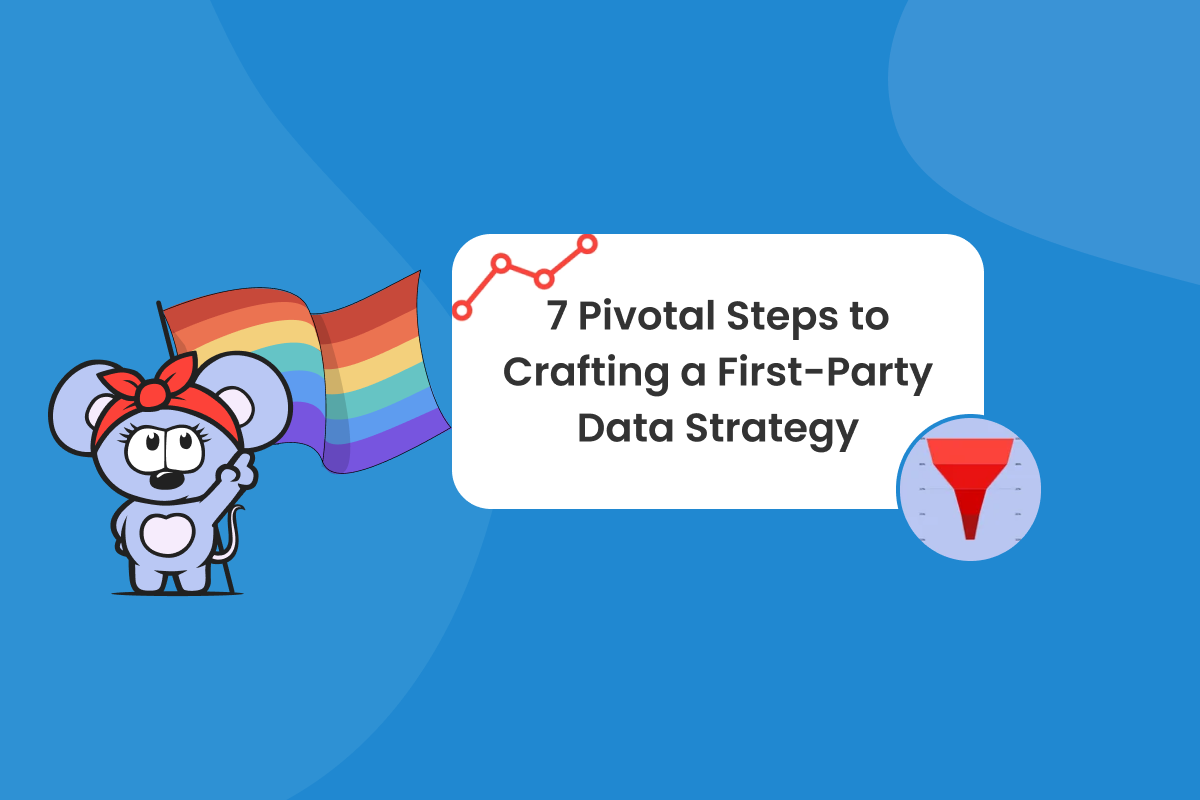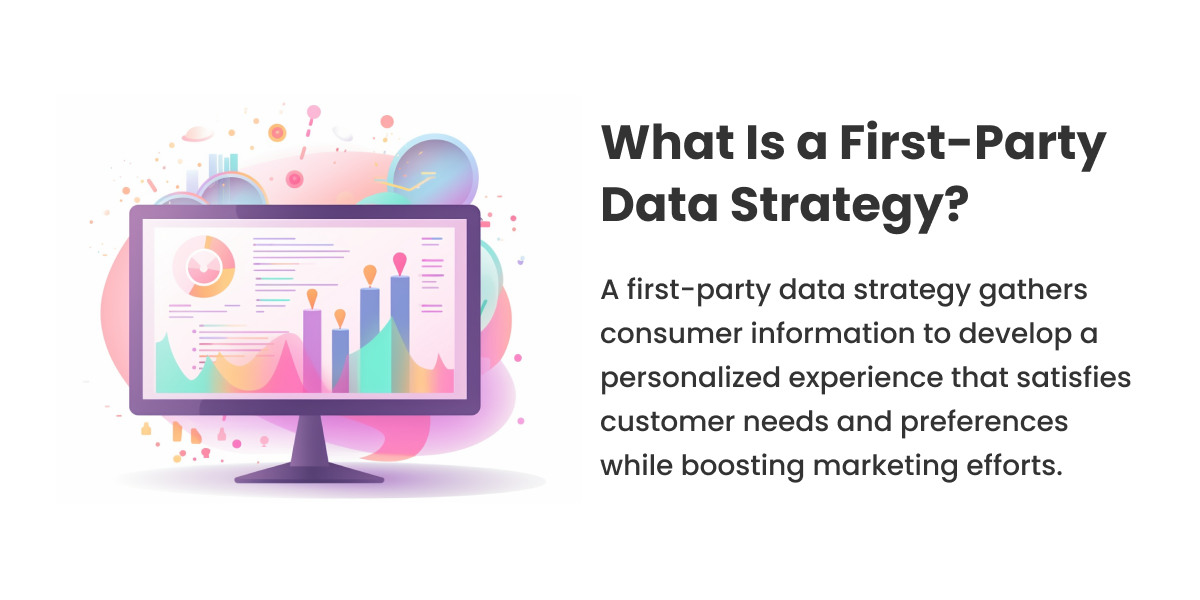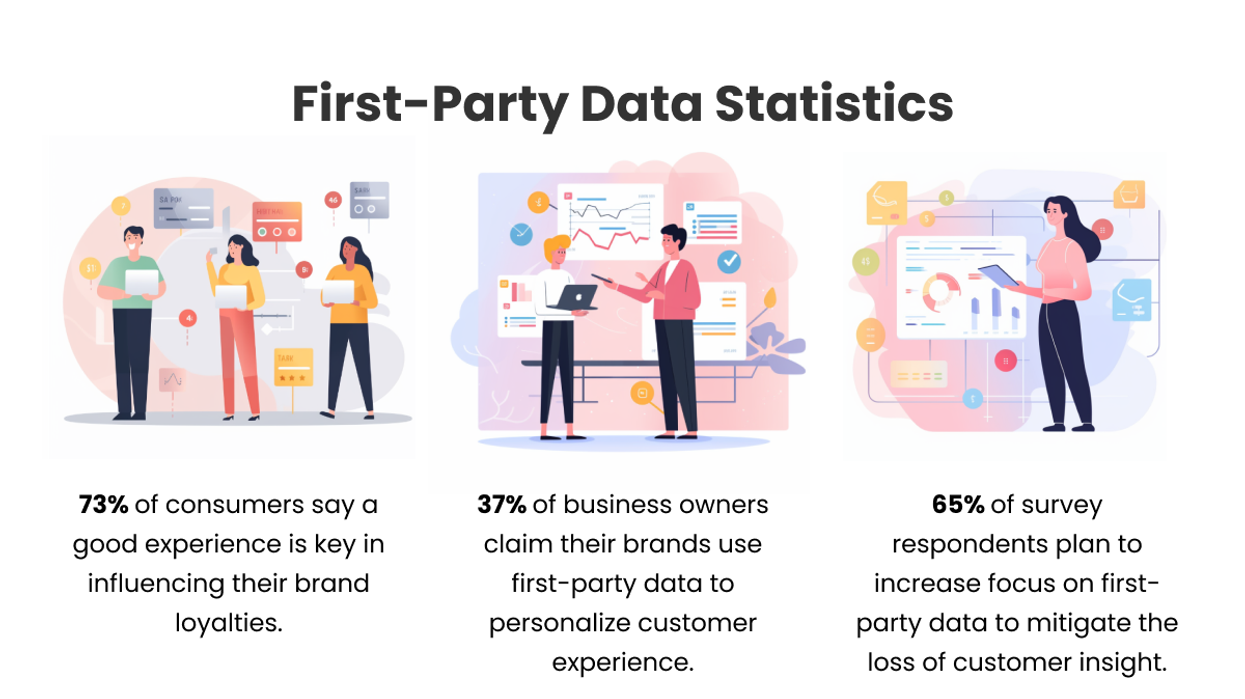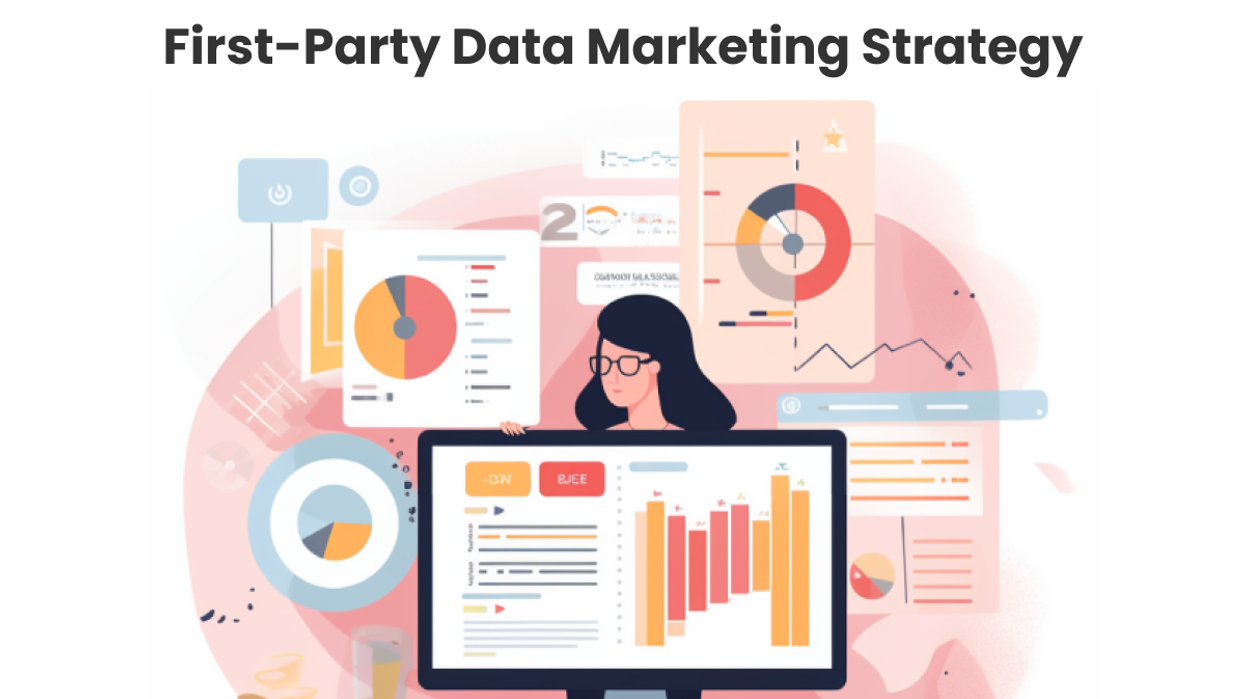
If you want to learn how to create a first-party data strategy for your business, you've come to the right place. Third-party browsing cookies are officially leaving the building as Google's Privacy Sandbox will turn off all third-party cookies in Chrome in 2024 to strengthen online security and protect private user information.
What is a first-party data strategy, and how do you successfully implement it? In this guide, you will learn how to build an effective first-party data strategy that amplifies your business and efficiency.
What Is a First-Party Data Strategy, and How Do You Use It?
A first-party data strategy gathers consumer information to develop a personalized experience that satisfies customer needs and preferences while boosting marketing efforts. Think of it like directly approaching your customers and asking them what they prefer to see when visiting your website.
How to Collect First-Party Data
The best way to collect first-party data is by tracking user behavior. To do this, site owners can embed a tracking pixel into their site’s HTML code which will collect data about user interactions and track customer behavior patterns across multiple sites and apps. Anytime someone lands on your page, engages with a post, makes a purchase, or exits a page, the tracking pixel gathers all this information.
Examples of first-party tracking pixels include:
- Conversion Pixels: Conversion pixels track ad sales and conversions from marketing campaigns. If you want to know the conversion rate or ROI from a sales, marketing, or social media promotion, use a conversion pixel.
- Retargeting Pixels: Retargeting pixels concentrate on website visitor behavior. The pixels detect a customer's browsing activity each time they arrive on a page and click a product to gather more information about them. By concentrating on visitors who have already visited the site and focusing on their interests to generate repeat business, these pixels assist website owners in improving the user experience.
First-party data is beneficial for the following:
- Increasing customer loyalty and engagement
- Improving brand trust and marketing performance
- Raising user retention and building stronger customer relationships
- Nurturing long-term business growth
First-Party Data Statistics
- 73% of consumers say a good experience is key in influencing their brand loyalties. (Forbes)
- 37% of business owners claim their brands use first-party data to personalize customer experience. (Statistica)
- 65% of survey respondents shared plans to increase their focus on first-party data to mitigate the loss of customer insight.(Deloitte)
First-Party Data User-Focused Marketing Examples
Below are some effective marketing examples for utilizing first-party data:
- Surveys: Surveys deliver user feedback about their online experience and preferences.
- Sign-Up Forms: Sign-up forms bridge your products and services to your customers' interests. Users can input their name, email address, occupation, and other valuable information to help your business align with their needs.
- Demographics: Collecting demographic information like age, gender, location, and income helps to identify your target market.
- Purchased Products: Customer purchase history offers insights into product preferences.
- Mobile Apps: You can track how long users spend on your apps to learn about their buying tendencies.
- Website Analytics Tools: Brands that utilize analytics tools like Google Analytics can collect massive amounts of customer data to analyze their pages and use these results later for targeted marketing campaigns.
- Email Subscriptions: Companies use email subscriptions to segment their audiences and monitor user intent through open and click-through rates.
- Social Media: Shares, comments, likes, and followers demonstrate what content your users find most relevant to their queries.
- Paid Ads: Ad targeting is an effective way to personalize your content and place it in front of a larger audience.
A successful first-party data strategy requires more than collecting customer data. Businesses must gather, store, and analyze their first-party data to understand audience behavior and use these insights to improve marketing performance and deliver more customer value.
Step 1: Set Up Business Goals for Your First-Party Data Strategy
It's essential to get a clear understanding of your business goals. Start with short-term objectives to prioritize where to send your first-party data efforts. Here are some ways to use your first-party data:
- Create a segmentation campaign for ad targeting.
- Send personalized offerings and discounts to increase product purchases.
- Automate tasks to handle more customer queries.
- Develop a cross-channel marketing sequence to match consumer-buying patterns.
Defining clear business goals will guide your data collection and analysis to meet your objectives and drive your business forward.
Step 2: Create a Buyer Journey Layout
First-party data helps to anticipate what buyers are searching for. Think of the buyer journey as a trail of virtual breadcrumbs a user leaves when visiting your site. These breadcrumbs lead you directly to your customers’ interests.
To create a buyer journey using first-party data, follow these steps:
- Develop a Buyer Persona: Consider who you would want as your perfect customer and create a buyer persona for them. Write their potential hobbies, income, dislikes, and interests.
- Target Your Buyer: Focus on your buyer’s browsing habits when visiting your site. What are they looking for? What are some of their concerns that need solving?
- Monitor Their Stops: Did the customer leave items in their shopping cart? Did they add a new review? Observe how the customer engages with your brand and moves through the funnel.
- Identify Customer Pain Points: Use first-party data to determine your customers' biggest problems and work to be their number one problem solver.
- Testing: Now that you understand what your customers need, you can use testing methods to see what users respond to more often. Sending out an email with two different headlines is an effective way to identify what message resonates most with your audience.
Step 3: Determine Your Ideal Market
Knowing your target audience is crucial for a successful first-party data strategy. Who are you trying to reach with your marketing efforts? By understanding your target audience, you can collect relevant data to maintain customer loyalty and deliver personalized marketing campaigns.
Step 4: Manage Your First-Party Data
Raw data alone is insufficient for an effective strategy; managing first-party data involves storing, organizing, and protecting it. This requires a management system that ensures your data is easily accessible, secure, and compliant with privacy regulations. Some ways to manage first-party data include:
- Customer relationship management (CRM) software
- Updating or removing old or outdated data
- Analytics tools
- Marketing automation
Step 5: Track and Measure Your First-Party Data Results
By regularly analyzing your data, you can identify trends and patterns, gain insights into customer behavior, and make informed decisions about your marketing efforts. Key performance indicators (KPIs) like bounce rate, conversion rate, ad revenue, and page performance all contribute to a successful first-party data strategy.
Pick 1–3 KPIs to track and manage over several months to evaluate the effectiveness of your first-party data strategies.
Step 6: First-Party Data Integration Tools
Integration tools like lead generation forms or AI task automations allow you to effectively collect, analyze, and cross-reference your data across multiple channels. Choosing tools that fit your business operations, will enhance your data strategy and prepare you for success.
Step 7: Maintain Customer Trust
Customer trust is the foundation of a successful business. Brands that place the user first reap the rewards of trustworthiness and customer loyalty. First-party data is about understanding your target customers and appealing to their needs. Caring for them builds a positive reputation that increases customer retention, value, and satisfaction.
Master First-Party Data With RebelMouse
RebelMouse pushes the boundaries of a standard content management system (CMS). With our AI-powered technology, we equip our users with a next-generation content platform that unlocks new opportunities for growth, content ideation, and revolutionary marketing.
Request a demo of RebelMouse to discover how first-party data can bridge the gaps in your business, amplify your growth, and bolster your digital strategy for the future. We help you construct your first-party data strategy from beginning to end, and we maintain all CMS upgrades so that you can focus on what matters most to your business.
- Revolutionizing Publishing With First-Party Data and AI - RebelMouse ›
- Defining Zero-Party, First-Party, Second-Party, & Third-Party Data ... ›










































































